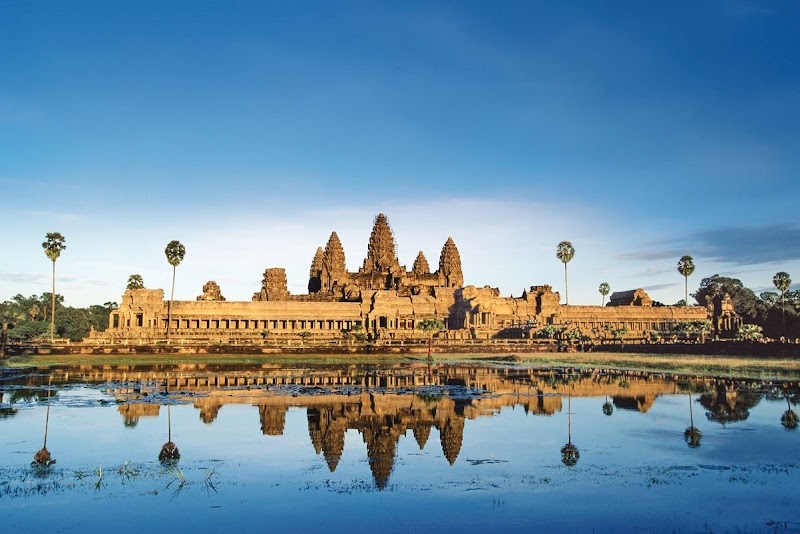
Angkor Archaeological Park Adventures
Angkor Archaeological Park is a UNESCO World Heritage site known for its monumental remains of the Khmer Empire, offering a blend of history and natural beauty.
About Angkor Archaeological Park

Angkor Archaeological Park, sprawling over 400 square kilometers, is located in the lush landscapes of Siem Reap Province in Cambodia. It represents the heart of the ancient Khmer Empire, encompassing the spectacular remains of different capitals of the Khmer Empire from the 9th to the 15th century. The park is renowned for its majestic temples including the iconic Angkor Wat, the ancient city of Angkor Thom, and the Bayon Temple known for its multitude of serene and smiling stone faces. The dense jungles surrounding these architectural marvels offer a habitat for diverse wildlife, including various bird species, macaques, and butterflies. The park draws history enthusiasts, photographers, and nature lovers alike, providing myriad opportunities for exploration and discovery. Visitors can enjoy biking through the forest paths, capturing the exquisite bas-reliefs, and witnessing stunning sunrises over the temples. The cultural significance, ancient architecture, and natural surroundings make Angkor Archaeological Park a captivating destination for travelers from around the world.
Highlights
Angkor Wat
The Bayon with its enigmatic faces
The tree-roots entwined Ta Prohm
Banteay Srei with its intricate carvings
Notable Natural Features
Angkor Wat
The largest religious monument in the world, renowned for its grandeur and intricate bas-reliefs.
Ta Prohm
Known for massive trees growing out of the ruins, offering a 'lost world' atmosphere.
Bayon Temple
Famous for its 200 smiling stone faces that adorn its towers.
